Homepage > MBA Admissions > Business Schools > MIT Sloan MBA Essays 2022-2023: Analysis and Tips from an MIT Fellow

MIT Sloan MBA Essays 2022-2023: Analysis and Tips from an MIT Fellow
Posted by Suheb Hussain | Jan 24, 2023 | Business Schools , GMAT Focus Edition , MBA Admissions , MBA Application Process
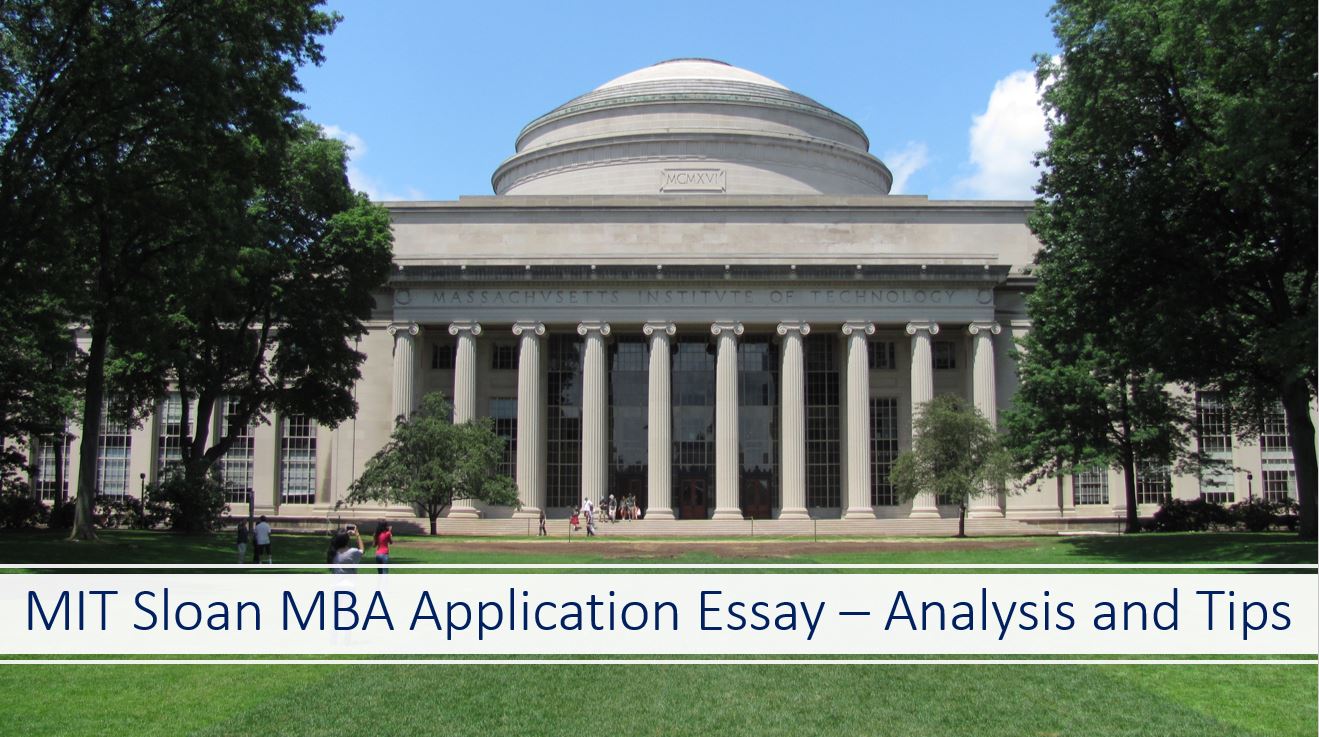
The MBA application for MIT Sloan School of Management is quite different from other business schools. The application does not have an MBA essay per se, but has an extensive application with the following requirements:
- Cover Letter (300 words or fewer)
- Resume (one page)
- Video Statement (1 minute)
- Letter of Recommendation (one)
- Additional References (two)
- Organizational Chart
- Optional 250-word short answer question
In this article, Prashant Tibrewal from Admitsquare, who has mentored 1,000+ students get into their dream business schools and who is currently enrolled at MIT Sloan himself, shares his expert tips on the MIT Sloan MBA essay and other application components.
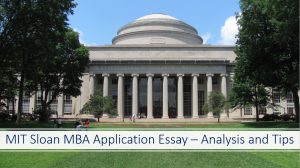
As you start working on your MIT Sloan MBA application, ask yourself if you are cut out for MIT . Securing an admit to one of the M7 business schools is not just about a high GMAT score or a unique profile or a strong application.
While all of these are just “prerequisites”, what remains the most important is a strong personality match – between the applicant and the school. You should, therefore, spend as much time understanding your dream schools, as you would, working on your application.
What makes MIT so unique and desirable to applicants?
Getting a seat at MIT Sloan does not just give you access to the business school, but also to the larger MIT university, which is among the most future-focused education ecosystems one can dream of as a student.
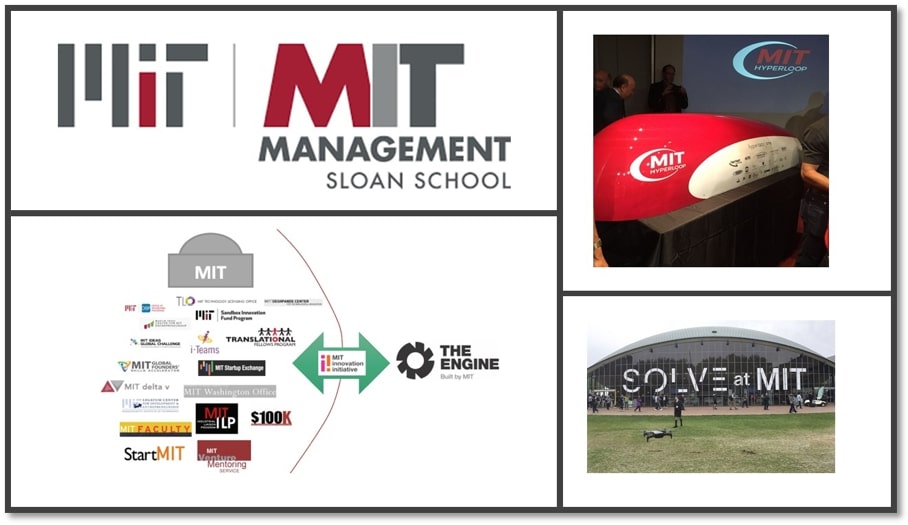
Not surprising, therefore, that an MIT team comprising of students from aeronautics, mechanical engineering, electrical engineering, and business management beat out teams from 115 other universities and 20 countries to earn the Best Overall Design Award at the SpaceX Hyperloop competition.
MIT Sloan offers an exciting range of master’s programs, designed for a wide range of students and career outcomes. It may be wise, therefore, to research well and apply to the program that you would benefit the most from:
- Sloan Fellows MBA (1-year)
- Leaders in Global Operations (LGO)
- Master of Finance
- Master of Business Analytics
Do you aspire to get into the MIT Sloan MBA Program? A 740+ GMAT score can significantly improve your chances of admission. Kickstart your GMAT preparation by Signing up for our Free Trial ! For any queries, write to us at [email protected] . We are the most reviewed GMAT prep company on gmatclub with more than 2500 reviews.
MIT Sloan MBA Application Deadlines
Take a look at this article to know the MBA application deadlines of other business schools.
MIT Sloan MBA Essays and Application Requirements
While getting an admit at MIT Sloan can be difficult, applying to the program doesn’t come easy either. The MIT Sloan MBA has an extensive application with the following requirements:
MIT Sloan Cover Letter Analysis and Sample Essay Structure
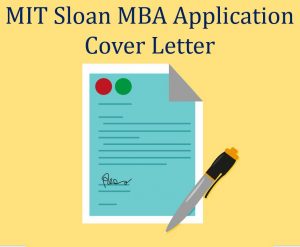
“MIT Sloan seeks students whose personal characteristics demonstrate that they will make the most of the incredible opportunities at MIT, both academic and non-academic. We are on a quest to find those whose presence will enhance the experience of other students. We seek thoughtful leaders with exceptional intellectual abilities and the drive and determination to put their stamp on the world. We welcome people who are independent, authentic, and fearlessly creative — true doers. We want people who can redefine solutions to conventional problems, and strive to preempt unconventional dilemmas with cutting-edge ideas. We demand integrity and respect passion.”
Taking the above into consideration, please submit a cover letter seeking a place in the MIT Sloan MBA Program. Your letter should conform to standard business correspondence, include one or more examples that illustrate why you meet the desired criteria above, and be addressed to the Assistant Deans of Admissions, Rod Garcia, and Dawna Levenson (300 words or fewer, excluding address and salutation).
The MIT admissions team, including Rod Garcia and Dawna Levenson, has been the most consistent admissions team among the top business schools, ensuring the highest quality of student recruitment over the years.
The team, having retained the Cover Letter requirement for the fifth year now, clearly loves the format and how it has helped assess applicants. An open-ended question such as this comes with a high risk of submitting an essay that may not be aligned with the expectations of the admissions team.
Why such a short (300 word) cover letter, in contrast to other schools that allow much more space and scope to present yourself?
Well, for an MIT applicant with rich professional experience, applying to a business school is pretty similar to applying for a job. This is your opportunity to convince the team why they should consider your application over thousands of other well-qualified applicants.
Candidates often end up presenting a verbose, high level, broad-based career summary, which is exactly what the adcom doesn’t want to read. With access to your resume, one can pretty much trace your career path and gain a broad level of understanding.
The MIT Cover Letter lays down focused guidelines and seeks to understand specific aspects of your personal and/or professional life. “We welcome people who are independent, authentic, and fearlessly creative — true doers.”
While the school encourages these qualities among its students, to be able to establish through your cover letter that you have already demonstrated these qualities, will be the key to a strong cover letter.
Further, understanding the MIT Style of Leadership or the Problem-led Leadership will be an interesting exercise to help you develop a stronger application. The question specifically asks to substantiate your claim with example(s).
As you recollect your best achievements and think of the examples to present in the cover letter, do not forget that it is a 300-word essay.
You do not want to touch upon too many things and spread yourself too thin. Ask yourself what key qualities you would want to establish through the cover letter and find the best example that demonstrates the quality.
If space permits, back it with another short example. While it goes without saying that you use the STAR format, but go deep with “how” you did what you did. Talk about the extrinsic as well as the intrinsic motivations behind your actions.
And while you do all this, do not lose track of the primary purpose behind writing this cover letter – “to seek a place in the MIT Sloan MBA Program”.
A good part of your essay should touch upon why you are seeking a place in the program (your short term and long term career plans) and how the MIT MBA will equip you to achieve your plans. How well you know yourself and how well you know the school is both critical to presenting a strong match.
MIT Sloan Resume Format
The resume you submit to a business school holds extremely high significance, given that it helps the adcom get a detailed perspective about your professional experience and is often the only document that the interviewer has access to (once you receive an interview invite).
Not all business schools prescribe a resume format, but MIT Sloan does. In addition to suggesting the order of the different components of the resume, you are specifically asked to redact your personal information. Further, the following are the instructions to be followed.
Please submit a one-page resume that includes the following information and formatting:
- One page limit
- Times New Roman font
- Size 10 font
- Word or PDF formats only
- Redact (remove or blackout) your name, address, and contact information
For formatting purposes, please list the information in the following order in reverse chronological order:
- Education – please feel free to include relevant awards, scholarships, and professional societies.
- Company name
- Results-oriented bullets that demonstrate your skillset, and
- Additional information – languages, extracurricular activities/community service, technical skills/certifications, and special skills/interests (if appropriate).
MIT Sloan MBA application video statement
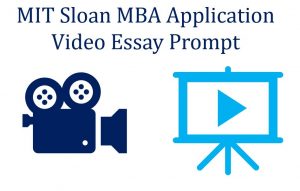
Applicants are required to upload a 1-minute video as part of their application. In your video, you should introduce yourself to your future classmates, tell us about your past experiences, and touch on why MIT Sloan is the best place for you to pursue your degree.
Videos should adhere to the following guidelines:
- No more than 1 minute in length
- Single take (no editing)
- You should be speaking directly to the camera
- Do not include background music or subtitles
When most other schools are using the Kira video format where you must answer the video questions live, MIT allows you enough time to plan and record your video.
Is this supposed to be your Elevator Pitch? Probably yes, albeit a more personal one. Having presented most of your information through your resume and the cover letter, this should be your space to “connect” with your future classmates as well as the admissions committee.
You may talk about your personal background, unique life experiences, interests, and passions, and how specific opportunities at MIT connect with your plans and interest areas.
Sloan doesn’t want you to hire a video expert – an unedited video makes it a level playing field for all applicants.
While the video will allow the admissions committee to see you and hear you, it is your passion and your story that will invite them to feel your presence and personality. Prepare a story that is authentic, exciting, and enchanting. Above all, sound fluent, but not rehearsed!
The following article discusses the analysis and tips related to MIT Sloan video statement in detail. Have a look! 4 tips to ace MIT Sloan video statement . You can also refer to the following article for insights on how to make an impressive MBA application video essay: Make an impactful MBA Application Video Essay .
MIT Sloan Letter of Recommendation and Additional References
Several schools are now moving to a single recommendation, thus making the application less demanding for the candidate.
While the MIT LOR format isn’t very different, what’s unique is the requirement for two Additional References. These references do not need to submit any document upfront, but they may be called if required.
Choose your references like you would choose your recommenders – people you have worked closely with, who may be in a good position to talk about your strengths with specific instances.
Most of our candidates did not report their references being called, but you may want to pick the best possible options, nevertheless.
MIT Sloan MBA application – Organizational Chart
Please upload an organizational chart that outlines the internal structure of your department and company. Limit to two pages.
Note: You may choose to create your own document or redact individuals’ names. However, please provide as much information as possible.
We should be able to see your line of reporting to the top of your organization, and to easily find you, your peers, your supervisor, their peers, and your direct reports (should you have any), as well as any recommender or references from your current organization. For those in consulting, please submit an organizational chart of a current or previous project you were staffed on.
This is again a unique requirement for the MIT Sloan application. This isn’t really a new addition to the application, which means that MIT has found it useful to evaluate the applicant’s relative position in the organizational hierarchy.
The key is to make it informational, with good details about your own position as well as those who may be in levels higher and lower than you.
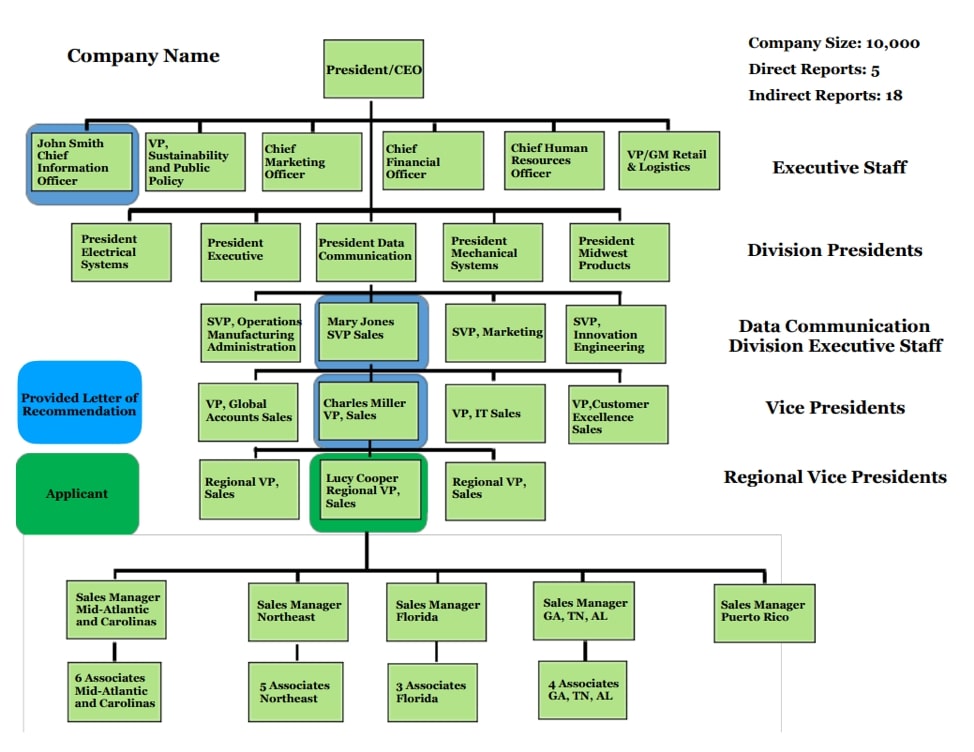
You may not need to invest a lot of time making the organizational chart super fancy, but a simple chart presenting the different levels should work pretty well. Refer to the sample organizational chart suggested by the school.
MIT Sloan MBA application- Optional 250-word short answer question
For the 2022-23 applications, the applicants are invited to expand on their background by responding to the following optional 250-word short-answer question:
“How has the world you come from shaped who you are today? For example, your family, culture, and community, all help to shape aspects of your identity. Please use this opportunity if you would like to share more about your background.”
According to the MIT website , This question is truly optional; applicants will not be evaluated more positively or negatively should they choose to respond. This is an opportunity for you to share more about yourself with the Admissions Committee, should you choose to do so.
Suggested Reading: “Problem-led Leadership” – Are you cut out for the MIT Sloan MBA? Applying to Kellogg? Read our detailed Kellogg Essay Analysis
About the Author

Prashant Tibrewal is the founder of Admit Square Consulting and has mentored 1000+ MBA aspirants to get into top global universities such as Harvard, Stanford, INSEAD, Oxford, HEC, ISB, etc. Prashant has also served on the Board of the Association of International Graduate Admissions Consultants (AIGAC) and led the AIGAC Conference 2020, attended by admissions officers from 25+ top-ranked MBA programs.
Admit Square Consulting has mentored applicants from diverse backgrounds to apply to top MBA programs. With a proven track record of 10+ years, and admits to universities such as Stanford, MIT, Kellogg, Cambridge, INSEAD, etc., Admit Square was awarded the Most Successful International MBA Consulting Company in India at the India Education Awards, 2019. With a team of Consultants from top business schools such as MIT, Yale, LBS and Oxford, Admit Square offers 100% Money-back Assurance on its services. You may send your details to [email protected] for a free profile evaluation.
That was all about MIT Sloan MBA essays. Here are a few other that can help you with your MBA application essays:
- 5 Different Types of MBA Essays Explained
- MBA Application Process – Weightage of Different Components
- 2020-2021 MBA Application Deadlines
Do you aspire to get into the MIT Sloan MBA Program? A 740+ GMAT score can significantly improve your chances of admission. Kickstart your GMAT preparation by Signing up for our Free Trial ! For any queries, write to us at [email protected] . We are the most reviewed GMAT prep company on gmatclub with more than 1940 reviews.
About The Author

Suheb Hussain
Don't miss these.

Helpful posts Curated just for you!

You might also like

Browse Related Topics

Take a free diagnostic SIGma-X mock test
Gauge your section-wise ability and get started with your gmat prep.
Adaptive mock test with ESR+ analysis
400+ practice questions with detailed solutions, 10+ hours of ai-driven video lessons.
Take the first step to score 740+

Essay • MBA • MIT
MIT Sloan MBA 2022-2023 Essay and Video Tips
July 5, 2022

Following the release of MIT’s MBA Deadlines , we’re presenting our definitive guide to Sloan’s written and video application essays. As a quick note, there have been no major changes to the app this year.
Importantly, once you pop open the application, you’ll notice that there is no traditional optional essay (i.e., one referencing problems in your candidacy) included. Instead of an optional section, applicants are provided with two spaces within the Academic Information and Employment Information portions to address any problems in their profile, such as poor school performance or significant job gaps. Should there be any red flags in your history, it goes without saying that it is in your best interest to use that space.
Because MIT’s MBA admissions process is hyper-competitive, the first step to standing out should be to learn about and connect with the program: dive deep into MIT’s courses, structure, culture, and the other things that make MIT unique. Interacting with the program’s staff, as well as former and current students, either virtually or in-person, should also play a key role in your admissions process for MIT Sloan.
Cover Letter – MIT Sloan seeks students whose personal characteristics demonstrate that they will make the most of the incredible opportunities at MIT, both academic and non-academic. We are on a quest to find those whose presence will enhance the experience of other students. We seek thoughtful leaders with exceptional intellectual abilities and the drive and determination to put their stamp on the world. We welcome people who are independent, authentic, and fearlessly creative — true doers. We want people who can redefine solutions to conventional problems, and strive to preempt unconventional dilemmas with cutting-edge ideas. We demand integrity and respect passion.
Taking the above into consideration, please submit a cover letter seeking a place in the MIT Sloan MBA Program. Your letter should conform to a standard business correspondence, include one or more professional examples that illustrate why you meet the desired criteria above, and be addressed to the Assistant Deans of Admissions, Rod Garcia and Dawna Levenson (300 words or fewer, excluding address and salutation).
One of the most common questions about this essay is whether or not MIT actually wants a cover letter. The answer is, sort of . While this essay’s format should follow that of a generic cover letter, its content should be oriented to match MIT’s particular tone and preferences.
In terms of substance, the two main areas of focus should be on your experiences and MIT’s MBA. The larger part of your essay should share examples from your life that reflect the values of MIT, such as recent professional experiences and successes. You can extend your focus, however, as long as you make sure to highlight those qualities that MIT is looking for, such as leadership, teamwork, creativity, and communication.
For the cover letter’s second portion, try connecting the experiences you just mentioned to concrete aspects of MIT’s program and/or culture. It’s best to only include relevant points gathered from your prior research and outreach; writing that’s too general risks being read as coming from a lack of effort, care or both. It’s important to remember that the purpose of this second part is to show how you fit the profile that MIT desires, which is difficult to accomplish without expressing a deeper understanding of the MBA.
Finally, while cover letters can at times come across as dry, it’s best to show a bit of style and creativity while writing this particular one. Try to avoid generic language when possible, and try to pique your reader’s interest by employing an engrossing and generally positive tone.
Optional Short Answer Question – Applicants are invited to expand on their background by responding to the following optional 250 word short answer question:
How has the world you come from shaped who you are today? For example, your family, culture, community, all help to shape aspects of your identity, please use this opportunity if you would like to share more about your background.
This question is truly optional; applicants will not be evaluated more positively or negatively should they choose to respond. This is an opportunity for you to share more about yourself with the Admissions Committee, should you choose to do so.
Let’s start with what worries applicants most: is this a truly optional essay? Yes, it absolutely is. Not only will you not be penalized for leaving this out of your application, it may in fact be to your benefit to not attempt this question. If you have nothing that you can add that would reveal an engaging or unique perspective that helps you stand out more from the applicant pool, there’s not much that needs to be added here. Having said that, the question does allow for a candidate at the margins to really bolster her candidacy with a show of her vibrancy or an expression of the difficulties that she has overcome.
Before you decide to tackle the question, think back to your history. What were the factors and experiences that drove you to become the individual you are? What shaped your world view or the way you interact with people? What helped create the drivers of your life? Once you have these in mind, weigh them against the rest of your application and what you believe others may include as responses. Will it improve the admissions committee understanding of your profile and might it help set you apart? Once you have the answers to these questions, you can decide on whether to include a response.
Potential Additional Essay (Interview Dependent) – The mission of the MIT Sloan School of Management is to develop principled, innovative leaders who improve the world and to generate ideas that advance management practice. We believe that a commitment to diversity, inclusion, equity, and well-being is a key component of both principled leadership and sound management practice. In 250 words or less, please describe how you, as a member of the MIT Sloan community, would work to create a campus that is welcoming, inclusive and increasingly diverse.
Details for submitting your response will be included in the interview invitation.
MIT wants to grow its strong, supportive student and alumni network. In order to accomplish that goal, they try to ensure that admitted candidates will actively participate in Sloan’s MBA community. In order to best answer this potential essay, try to identify how your previous interests and activities align with those available at MIT, especially those outside of the classroom. Feel free to be creative. It may help to ask yourself how you can improve a particular MIT community or association, and how that improvement is linked with your unique strengths, interests, and former experiences. However, do remember to stay humble when mentioning your potential contribution, as MIT doesn’t want to run across any sort of hubris in this essay (even if it’s merited).
VIDEO ESSAY
Applicants are required to upload a 1 minute (60 second) video as part of their application. In your video, you should introduce yourself to your future classmates, tell us about your past experiences, and touch on why MIT Sloan is the best place for you to pursue your degree.
Videos should adhere to the following guidelines:
No more than 1 minute (60 second) in length
Single take (no editing)
You should be speaking directly to the camera
Do not include background music or subtitles
We recommend using applications such as QuickTime or iMovie to record yourself. Upload the video file according to the detailed instructions within the application.
Video recordings understandably make many people nervous. However, this isn’t like INSEAD’s video essay where you’re asked a series of random questions and need to think on your feet (for more about that sort of requirement, read our post here ). Instead, for MIT you can plan the video out as much as you’d like. The question then becomes, what should you do with so much control?
Before we get to the shoulds , let’s quickly review the shouldn’ts . This is not a place where you should be mentioning any subjects that have been discussed in other parts of the application. Neither is this a question about your future goals, nor is it about MIT. This video is all about you .
Most applicants benefit from taking a personal approach here. First, take some time to outline the passions that define your life. What are the hobbies that take up most of your time? What are the events that have recently caused you to change your mind? What are the principles that guide your daily life? There are many questions you can ask yourself to help identify them.
Once you have a rough outline of what you’d like to present about yourself, consider how to best present those aspects. First of all, this isn’t a movie shoot: a camera crew is not a must (unless you happen to actually work in the film industry). However, there are many ways to bring your passions to life without having your video come across as overworked. If some of your main interests revolve around flight, for example, why not shoot your video amidst aeronautical materials or even in an airplane hangar – either could be a simple method to visually connect the viewer with your message. Beyond the mise-en-scène, we recommend that you practice your pitch so as to make sure that your speech comes across in a natural, friendly, and attractive manner, all while remaining professional.
If you’re planning on building a successful application for MIT Sloan, be sure to connect with our leading Sloan Experts .
Related Posts

5 Things You Should Do Before Applications Open

Planning for Round 2

CEIBS MBA 2022-2023 Essay and Video Tips

Carnegie Mellon Tepper School MBA 2022-2023 Essay & Video Tips

© 2022 • Admission Circle • Designed by Theme_Master
Privacy Overview

How To Write the MIT Sloan Pre-Interview Essays
Oct 25, 2022

After spending months fine-tuning your MBA application essays, you’ve finally received that long-awaited MIT interview invitation — only to discover that now you need to write more essays!
With more and more competitive candidates applying every year, elite MBA programs like MIT Sloan are always looking for new ways to distinguish the “admits” from the “dings.”
Though they may seem small and relatively unimportant at first, MIT Sloan’s interview essays are an important element of your overall application and should be carefully crafted. That’s why we’re sharing our top tips on how to approach and write your own interview essays . By following these tips, you can ensure you stand out and land a spot at MIT Sloan.
The MIT Sloan Pre-Interview Essay Questions
MIT Sloan has also long required candidates who are called to interview to submit an additional essay. This year, MIT Sloan’s interview question is as follows:
Required Question #1 (Diversity)
The mission of the MIT Sloan School of Management is to develop principled, innovative leaders who improve the world and to generate ideas that advance management practice. We believe that a commitment to diversity, inclusion, equity, and well-being is a key component of both principled leadership and sound management practice.
. In 250 words or less, please describe a time when you contributed toward making a work environment or organization more welcoming, inclusive, and diverse.
How to approach your answer
At MIT, diversity is a core value . This means that at Sloan, you’ll constantly interact with people who think and act differently than you do.
Succeeding in such an environment requires a great deal of adaptability and flexibility, as well as a willingness to learn from those who are different. This type of environment, however, is not for everyone, which is why MIT seeks to gauge how you respond to diversity in this essay.
We suggest you start by considering the brand you are presenting to MIT and examine which examples about diversity you can share that will add value to the stories you told in your cover letter and video. Then, make sure you narrow this list down to your single best story . In a 250-word essay , you won’t have time to fully explore multiple examples, so limit yourself to one killer story.
Required Question #2 (Data)
We are interested in learning more about how you make data-driven decisions and communicate results. Please select one of the following prompts to respond to.
- Please select an existing data visualization and in 250 words or less explain why it matters to you. The data visualization should be uploaded as a PDF. Examples may come from current events, a business analysis, or personal research (e.g. climate change, COVID maps, etc).
- In 250 words to less, please describe a recent data-driven decision you had to make, and include one slide presenting your analysis. The slide may include a data visualization example and should present data used in a professional context. Your slide must be uploaded as a PDF.
Considering how short the MIT application is, you should also use this as another opportunity to add something new to your application.
With this question, MIT seeks to understand how you are able to use data to make important decisions. MIT states that this example should come from data used in a professional context, so keep this in mind. When designing your slide, remember that you’re being judged on how you present the information visually, not on the data itself.
In your essay, make sure to explain how you analyzed the data and used it to make a decision . If you are not able to show how you applied the insights gained from the data you presented in a clear, concrete way, you may want to consider a different approach.
If you don’t have a job that requires you to use data on a regular basis, question 1 would be a better fit for you. If you do use data frequently at work, question 1 may still be a good option, but showing a real and measurable way in which you used data to make a decision is an excellent way to show the adcom you possess a great fit with their program.
TOP TIP: Make sure not to share confidential information. If you need to “sanitize” the data, this is acceptable.
MIT Sloan Pre-Interview Essay Examples
The mission of the MIT Sloan School of Management is to develop principled, innovative leaders who improve the world and to generate ideas that advance management practice. We believe that a commitment to diversity, inclusion, equity, and well-being is a key component of both principled leadership and sound management practice.
In 250 words or less, please describe a time when you contributed toward making a work environment or organization more welcoming, inclusive, and diverse.
As a volunteer at ORG, I helped educate 400 students from all over my city, some in very marginalized situations. Although we were providing a low-cost pre-college course, I began to notice how everyday norms we took for granted were inadvertently exacerbating difficulties faced by the underprivileged.
For instance, I noticed that I never saw certain students at lunchtime. Lunch was in an open space where most students ate together and forged friendships. However, students with nothing to eat routinely stayed in other parts of the building and were not just isolated but, more importantly, hungry. To address this situation, I prospected potential donors, developed a proposal, and presented it in an internal all-hands meeting, gaining approval. After coordinating with the university community, I helped build a fundraising department. Our first donor, NGO, provided a sandwich and juice to every student, so those in need would not feel ashamed to be singled out. The fundraising department has since continued to build partnerships to benefit students.
This experience taught me that there are norms in place that prevent us from seeing persistent inequalities. It would have been easy to dismiss the absence of certain students as a result of shyness or simply not notice at all. Commitment to creating inclusive environments means noticing systemic problems in everyday contexts and working collaboratively toward solutions.
Looking for MIT Sloan pre-interview essay examples? Our MBA Resource Center includes multiple examples of both the diversity and data prompts, as well as countless other resources, including interview mock sequences, sample interview responses, and so much more. Sign up here !

We are interested in learning more about how you make data-driven decisions and communicate results. Please select one of the following prompts to respond to:
- Please select an existing data visualization and in 250 words or less explain why it matters to you. The data visualization should be uploaded as a PDF. Examples may come from current events, a business analysis, or personal research (e.g. climate change, COVID maps, etc).
- In 250 words or less, please describe a recent data-driven decision you had to make, and include one slide presenting your analysis. The slide may include a data visualization example and should present data used in a professional context. Your slide must be uploaded as a PDF.
A few years ago, I helped lead the sale of a payment company to a strategic investor. Negotiations included a price adjustment based on the company’s future performance. When the adjustment time came, the company was performing well below the business plan, despite not having reported abrupt operational changes. After thoroughly analyzing its financial data, I realized that its credit fund, responsible for providing credit to thousands of merchants, was underperforming. While it could be easily explained by external market issues, I decided to investigate other possible explanations, such as higher default levels. I asked the fund administrator to provide me with the credit database and developed an algorithm to parse data from hundreds of thousands of transactions, which allowed me to identify a spike in default levels. After filtering the data for individual client performance, an unusually high number of reliable clients seemed to have stopped paying.
To further investigate, I talked with several departments, discovering the fund administrator had changed right at the spike period and uncovering the underlying issue: an integration problem with the new administrator corrupted the database. I asked the fund administrator to refile the financials using a corrected database. Since this would incur a fine, however, they denied my request. So, I negotiated with senior leaders and convinced them to use a “simulation” with the corrected database to support negotiations with the investor. By doing so, we almost doubled the amount my client received.
Make Sure You Succeed in any MBA Interview
Though you might not be practicing for your interviews, your competitors are. When you’re competing at such an elite level (and top MBA programs are about as elite as it gets), practice is the only way to get the edge you need.
Working with highly-trained professionals, like our team of interview experts, can also be an excellent step to include in your interview process.
- Maybe you don’t know where to start preparing.
- Maybe you ramble on and lose your focus while answering.
- Maybe you’re concerned about making errors, discussing your strengths, or addressing weaknesses.
- Maybe you’ve downloaded interview guides or have spent hours reading interview report forums—but still have questions and doubts.
Our interview prep and practice service focuses on helping you determine what to highlight in your interview depending on the program while using appropriate, impact-driven language without being artificial, or worse, robotic. We also help you choose (and perfect) culturally appropriate examples based on the schools you’re interviewing for.
As our client João, who was admitted to MIT Sloan, said:
“I would like to thank Ellin and her team for the extremely careful service they provided. After talking to and working with a few consulting firms, her work was the most structured I found.
Ellin helped me with my interview preparation and provided specific feedback about my pre-interview essays, especially for the MIT Sloan application. During all sessions, Ellin and her team demonstrated a deep knowledge of every school and offered excellent suggestions on how to improve both the content and the structure of my answers. Their service was definitely critical for my acceptance.”
Don’t undersell your success. Set up your 1:1 interview prep and show that you belong at a top MBA program!

Real MBA Essays That Got People In
School-specific sample essays that got our clients accepted
Get Access Now

98.9% Success Rate
With our expertise and 98.9% success rate in placing our consulting clients in at least one of their target schools, we can add more value to your application than you ever thought possible.
Recent Articles

Essay Editing Tips from the Pros: Preparing for Your MBA Journey
Mar 14, 2024
Importance of Essay Editing in MBA Applications Common Mistakes to Avoid in MBA Essays Strategies for Effective MBA Essay Editing Understanding the MBA Essay Requirements Key Elements of a Strong MBA Essay...

How to Use MBA Rankings Effectively to Find Your Perfect Fit
Feb 28, 2024
Understanding the Landscape of MBA Rankings What Does the Latest FT Ranking Show? Why Business School Rankings are Not Perfect Shifting The Paradigm With Personalization Beyond Numbers: Finding Your School Culture...

London Business School Guide: Everything You Need To Know
Feb 21, 2024
School and Program Overview Employment Information Is LBS Right for You? Academics at London Business School Networking and Extracurricular Activities What Makes LBS Special? LBS Resources To Help You Get Accepted...
Ready to start your MBA Success?

MBA Resources
MIT Sloan: MBA Application Essays
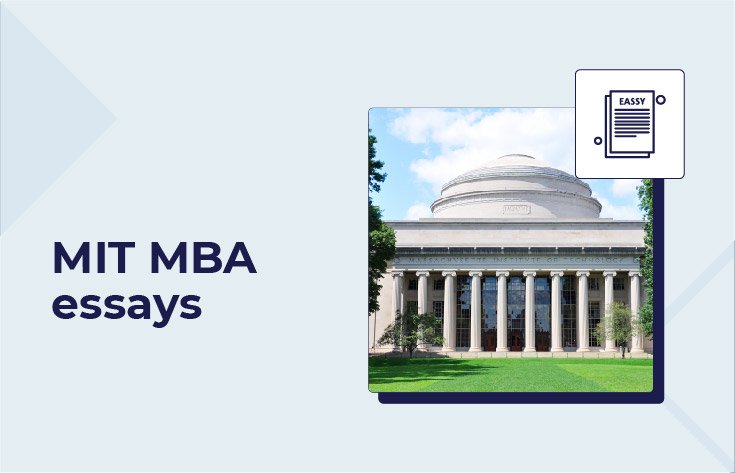
Greetings, Everyone!
We are back with our List of Top-B-school essay questions & prompts! Today, we will discuss the MIT Sloan Application Essays for the admission cycle 2022-23. MIT is a well-renowned B-school aiming to create a vibrant learning environment rich in diverse ideas and life experiences for aspiring MBA candidates. That’s why MIT encourages applicants from all areas of study, including non–conventional backgrounds like humanities, and the social/physical sciences, to traditional experiences like – business and engineering. In addition, the B-school is searching for curious, passionate candidates with good analytical skills who will enhance the collaborative community at MIT.
So, What’s your story? What experiences and decisions have shaped who you are today? To know all this, MIT has its unique way of the application process to evaluate all the relevant aspects of a candidate’s profile through their B-school Essays. So what are you waiting for? Let’s get moving!
Above all, let us first take a glance at all the relevant dates regarding different rolling application rounds!
MIT SLOAN: APPLICATION DEADLINES FOR AUGUST 2023 ENTRY
**3:00 p.m. EST must receive all applications on the deadline.**
Great! Now that we are well-versed with all the important dates, let’s get started on the application essays!
MIT SLOAN: COVER LETTER
Rather than a traditional essay, MIT seeks a cover letter from their students whose individual characteristics demonstrate that they will make the most of all the incredible opportunities available at MIT, both academic and non-academic. The School looks out for aspiring candidates whose presence will enhance the experience of other students hailing from diverse backgrounds.
Moreover, the School seeks thoughtful leaders with stellar leadership examples , exceptional intellectual abilities, drive & determination to put their mark on this dynamic business world.
Suggested Reading
How to build your MBA Application 101?
How to Frame Practical MBA Goals Essays
How to bring collinearity to your post-MBA goals?
MIT welcomes people who are ‘independent, authentic, and fearlessly creative’ — true doers. The renowned B-school seeks candidates who can redefine solutions to conventional world problems and strive to preempt unconventional dilemmas with cutting-edge ideas. The School also demands integrity, respect, and unmatched passion for working toward your post-MBA goals.
Considering the above, every aspiring candidate must submit a cover letter seeking a place in the esteemed MIT Sloan MBA program!
We follow a unique framework to help applicants dig deep into their work experience, leadership potential, strengths, weaknesses, etc., and structure the stories in a way that can bring the most impact.
Moreover, your letter should conform to standard business correspondence by including one or more professional examples that could illustrate why you meet the desired criteria above and be addressed to the Admissions Committee (300 words or fewer, excluding address and salutation).
Apart from the cover letter, there is also an Optional Short Answer Question in the application process to provide an opportunity for each candidate to expand on their background by responding to the below-mentioned optional 250-word short answer question:
Optional Short Answer Question – How has the world you come from shaped who you are today?
For example, your family, culture, and community all help to shape aspects of your identity. Please use this opportunity if you would like to share more about your background.
Although MIT mentions the question as truly optional and applicants won’t be evaluated more positively or negatively whether they choose to respond to the prompt or not. We think this is a great opportunity for candidates to share more about their driving force, inspiration, determination, and how your decisions throughout your journey shaped your career. Be honest! Don’t overstate or exaggerate. Your world need not be perfect, as your journey and the different routes you took to make it all worthwhile in front of the Admissions Committee.
MIT SLOAN: APPLICATION REQUIREMENTS
A complete application for 2023 entry consists of the following:
- Cover Letter
- One-page Resume
- 1-minute Video Statement
- One Letter of Recommendation
- Additional References – *contact information for two additional professional references.*
- Organizational Chart
- Transcripts
- Test Scores- *You can request a test waiver once the application is open. For more information about GMAT Waivers, you could refer to our article on- GMAT Waivers 2023
- Relevant Coursework & Professional Certifications
- Optional Short Answer Question.
That’s all about the MIT essay & application requirements! We hope this has helped you. However, if you are looking for a bit of more personal and precise advice, feel free to hop on a 1:1 profile evaluation call with our experts, where we’ll dive deep into your profile and help you understand your chances to top B-schools with absolutely honest feedback.
To understand how our process helps aspiring MBA candidates see a glimpse of how our Profile evaluations and consulting assistance works!
For more on B-School essays, you can check the links for our articles below!
Suggested Reading
- MIT Sloan Essays
- Wharton MBA Essays
- HBS MBA Essays
At MBA and Beyond, we are determined to help you develop a unique structure for each essay question providing step-by-step procedures to build a specific answer that would help you stand out; among the crowd! We are a team of expert consultants who follow a unique process to achieve maximum efficiency, quality, and interaction, ensuring a 100% unique and authentic application!
MBAandBeyond
HOP ON A 1: 1 CALL
Leave a Reply
Your email address will not be published. Required fields are marked *
Articles You Might Like

Should an International Candidate go for an INSEAD R3 MBA?
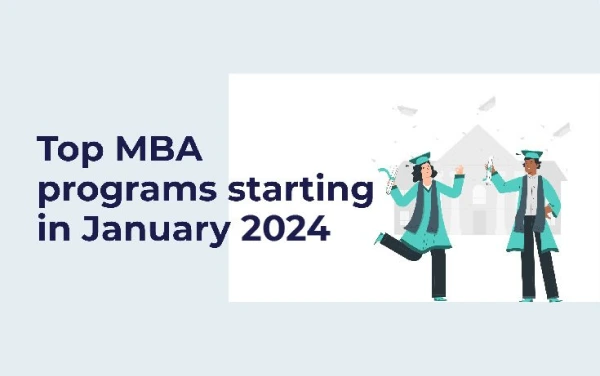
Top MBA programs starting in January 2024
Upcoming Events
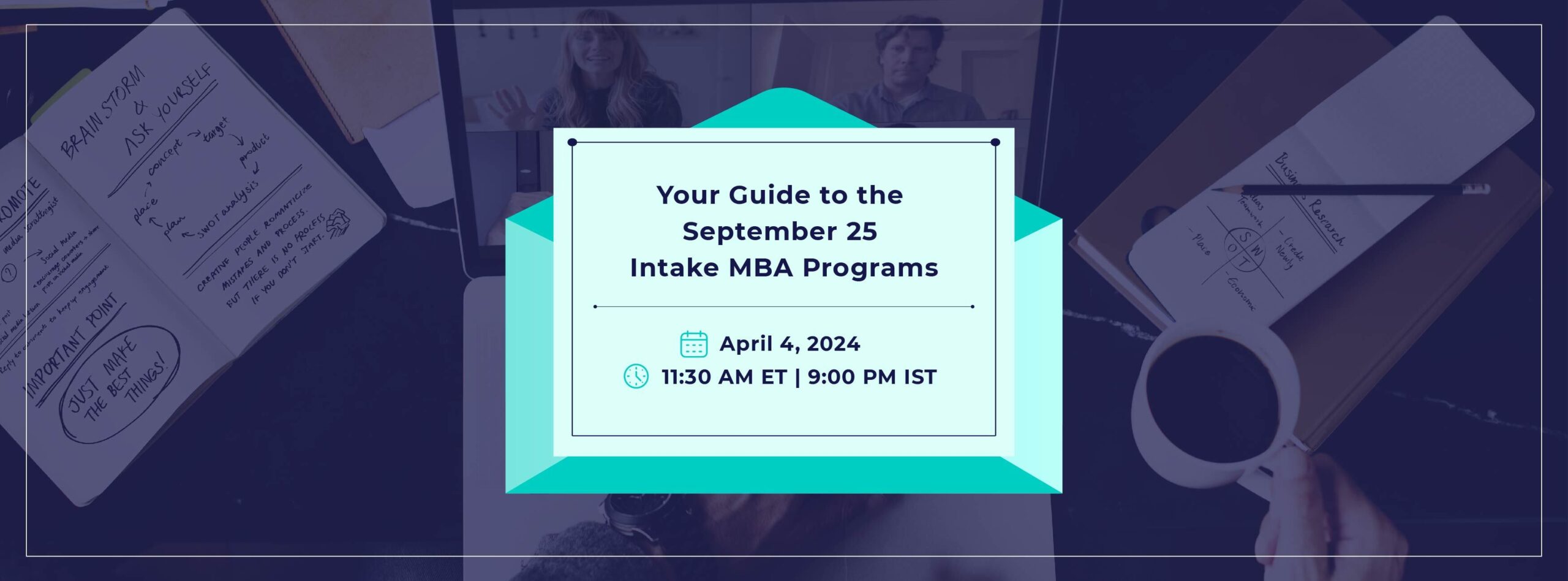
Unlock Your MBA Future: Expert Guidance for the Round 1 September 25 Intake MBA Programs
April 4, 2024 | 9:00 pm – 10:00 pm
UPCOMING EVENT: Unlock Your MBA Future: Expert Guidance for the Round 1 September 25 Intake MBA Programs. Register now
One year. A lifetime of impact. Register your interest.
Smart. Open. Grounded. Inventive. Read our Ideas Made to Matter.
Which program is right for you?

Through intellectual rigor and experiential learning, this full-time, two-year MBA program develops leaders who make a difference in the world.
A rigorous, hands-on program that prepares adaptive problem solvers for premier finance careers.
A 12-month program focused on applying the tools of modern data science, optimization and machine learning to solve real-world business problems.
Earn your MBA and SM in engineering with this transformative two-year program.
Combine an international MBA with a deep dive into management science. A special opportunity for partner and affiliate schools only.
A doctoral program that produces outstanding scholars who are leading in their fields of research.
Bring a business perspective to your technical and quantitative expertise with a bachelor’s degree in management, business analytics, or finance.
A joint program for mid-career professionals that integrates engineering and systems thinking. Earn your master’s degree in engineering and management.
An interdisciplinary program that combines engineering, management, and design, leading to a master’s degree in engineering and management.
Executive Programs
A full-time MBA program for mid-career leaders eager to dedicate one year of discovery for a lifetime of impact.
This 20-month MBA program equips experienced executives to enhance their impact on their organizations and the world.
Non-degree programs for senior executives and high-potential managers.
A non-degree, customizable program for mid-career professionals.
MIT Sloan Fellows MBA Program
How to Apply to the MIT Sloan Fellows MBA Program
What’s your story? What experiences have shaped who you are today? We want to know. We are on a quest to find curious, passionate, analytical candidates who will enhance the collaborative community here at MIT. Our goal is to create a vibrant learning environment rich in diverse ideas and life experiences. That's why we welcome applicants from all over the globe, and from all industries and academic backgrounds. Above all, we seek thoughtful leaders with exceptional intellectual abilities, determined to make their mark in the world—people who value dignity and respect. Here’s how to get started!
Register your Interest
Application Deadlines for June 2024 Entry
The Admissions Committee reviews all applications and will notify applicants of their decision on or before these deadlines. Please note that in the interest of confidentiality, we will only deliver official decisions via your online application.
All applications are due by 3:00 p.m. EST on the deadline date. The deadline is for both application materials and recommendation letters. All decisions will be released by end of the day on the decision release day.
READ RECENT UPDATES FROM ADMISSIONS
A complete application for 2024 entry requires:
Cover letter.
This global leadership development program is a 12-month, full-time MBA program designed to prepare an elite group of global mid-career managers with the management skills necessary to magnify their impact as leaders and innovators. Our guiding principles are to help you develop critical skills essential for future leaders; to instill a spirit of innovation through exceptional opportunities at Sloan and across MIT; to foster a deep spirit of community among Fellows; to provide a breadth of electives and depth through one-on-one relationships with senior faculty; and to offer a flexible curriculum to allow you to tailor the program to meet your specific professional objectives. We accomplish this by maintaining a foundation in our three pillars of: leadership, innovation and global perspective.
Taking the above into consideration please submit a cover letter seeking a place in the MIT Sloan Fellows MBA program. Your letter should conform to a standard business correspondence, include one or more examples that illustrate why you meet the desired criteria and be addressed to the Admissions Committee (300 words or less).
Please submit a resume (no more than two pages) to help us track your academic and career path. Try to focus on your work results, not just your title or job description.
Here are some pointers on formatting :
- Two-page limit
- Times New Roman font
- Size 10 font
- Word or PDF formats only
Provide the following information in reverse chronological order :
Education: Please include relevant awards, scholarships and professional societies
- Work Experience: Please include company name, title, results-oriented bullets that demonstrate your skill set, and dates
- Additional information: Please include extracurricular activities/community service, technical skills/certifications, and special skills/interests, and languages spoken (if applicable)
Video Statement
Introduce yourself to your future classmates. Here’s your chance to put a face with a name, let your personality shine through, be conversational, be yourself. We can’t wait to meet you!
Videos should adhere to the following guidelines :
- No more than 1 minute (60 seconds) in length
- Single take (no editing)
- Speaking directly to the camera
- Do not include background music or subtitles
One Letter of Recommendation
A detailed recommendation can tell us a lot about you. Make sure you select an individual qualified to speak about your results as a professional and your potential as a leader.
Some important details :
- SFMBA applicants must submit one letter of recommendation .
- A recommendation from a professional contact is preferred, ideally a manager or supervisor.
- We do not accept recommendations from family members.
- Your letter of recommendation must be received by the deadline date for the round you are applying (see above for our deadlines.) It is your responsibility to remind your recommender to make sure it is submitted on time.
Please choose a recommender who is able to provide specific answers to the following questions: How long and in what capacity have you known the applicant? How does the applicant stand out from others in a similar capacity? Please give an example of the applicant's impact on a person, group, or organization. Please give a representative example of how the applicant interacts with other people. Please tell us anything else you think we should know about this applicant. Describe the most important piece of constructive feedback you have given the applicant. Please detail the circumstances and the applicant’s response.
Additional References
We want to make sure we give you the best chance to show us your strengths. You must provide contact information for two additional professional references. If we still have questions after reading your application, we might reach out to your additional references. Similar to your recommender, these additional reference contacts should be able to speak to your professional and/or academic background. These two individuals should be different from your recommender.
Organizational Chart
To help us better understand your current role and the impact that you have on your team and department, please submit an organizational chart. We should be able to clearly understand the internal structure of your organization, where you sit in your organization, and your line of reporting.
Organizational charts should not be more than two pages and keep the following in mind :
- Give us as many details as possible (names, titles, etc.) but it’s okay to redact names if you need to.
- Please circle your role in red so that your position is easily identifiable.
- Make sure we can easily identify where you are, to whom you report, and if applicable, who reports to you.
- If your recommender or references are on your organizational chart (they may not be, and that’s okay!), please highlight them for us.
- If you are a consultant, entrepreneur, or affiliated with the military, review our FAQs for suggestions on how to approach the organizational chart.
Click here to view a sample organizational chart.
Transcripts
Please scan and upload your transcript(s) from all colleges and universities you attended or are currently attending. If you are currently earning a degree, please upload your most up-to-date transcript. We review transcripts carefully; please double check that what you have uploaded is legible; if you can’t read it, neither can we! Some important details :
- All applicants to the program must hold a four-year undergraduate degree or three-year equivalent undergraduate degree from outside of the U.S, by time of matriculation.
- Do not mail any hard copies of official academic records or transcripts.
- If you received an undergraduate degree as part of a master's program, please include an undergraduate entry in addition to your master's degree.
- If your transcripts are not in English, please scan and upload both the original and the certified translation.
- We cannot accept “digitally signed” or encrypted transcripts. If you’re having difficulty uploading your document, this may be the reason. Print out your transcript, scan it, and upload the PDF.
- We do not accept transfer credits. Any MIT classes taken pre-matriculation cannot be counted toward your degree at MIT Sloan.
Once admitted to the program, you will be required to provide an official signed and sealed transcript(s). Any discrepancies between the scanned transcripts and official transcripts may result in a candidate’s rejection or a withdrawal of our offer of admission.
Test Scores
Standardized tests, such as GMAT, GRE, and EA, are a critical component of the application and play an important role in our holistic evaluation process. The Admissions Committee will continue to accept the remote/at-home version of these exams with no preference. If your current situation prevents you from being able to submit a test score, the SFMBA program will allow candidates to submit their application without the test and review their submitted material as is and without negative inferences.
We will accept self-reported test scores by the application deadline, and welcome either traditional or online version of exams. Test scores should be valid by the application deadline. Official scores should also be sent using the following school codes:
- To share your GMAT score, please enter Massachusetts Institute of Technology (MIT) - MIT Sloan School of Management
- EA: X5X-QS-71
Relevant Coursework & Professional Certifications
We welcome applicants from many types of academic backgrounds and do not have any academic prerequisites. That being said, we want to understand what relevant coursework you have already completed in order to assess how you might handle our core SFMBA courses.
In the application, we ask you to tell us which courses (if any) in the following subject areas you have taken. We’ll also ask what grade you received in each course.
- Communications
- Linear Algebra
- Microeconomics
- Organizational Behavior
- Probability
Additionally, if you earned special certifications or took professional development courses in your spare time, please tell us about them! Feel free to submit academic evidence not already on your transcripts, such as: professional certifications CFA, CPA, ACCA, among others; non-degree coursework such as MITx MicroMasters, CORe, edX, MBA Math, or any other non-degree coursework you completed.
Short Answer Questions
Applicants will be required to reply to the following two short answer questions. Responses are limited to 200 words.
1. Please share your immediate and long term professional objectives and how the SFMBA program will help you to achieve them.
2. General Managers are often responsible for strategy, budget, and/or work output from individuals and teams for at least one function of an organization with the ability to see the big picture across functions. General Managers are part of short-term and long-term strategy discussions and work cross-functionally to achieve a goal or specific strategy. Please describe your General Management experience.
Optional Short Answer Question
Applicants are invited to expand on their background by responding to the following optional 250 word short answer question:
How has the world you come from shaped who you are today? For example, your family, culture, community, all help to shape aspects of your life experiences and perspective. Please use this opportunity if you would like to share more about your background.
This question is truly optional; applicants will not be evaluated more positively or negatively should they choose to respond. This is an opportunity for you to share more about yourself with the Admissions Committee, should you choose to do so.
Application Fee
The non-refundable application fee of $250.00 USD must be paid online prior to submitting your application.
In addition to the list below, attendees of some recruitment events and conferences where MIT Sloan is present may qualify for an application fee waiver. If you are in attendance at one of these events, you will be notified at the conclusion of the event and the payment section of your application will reflect the waiver automatically.
Please note that we cannot grant retroactive fee waivers if the application fee has already been paid online. If you are submitting a request, please wait to hear back from us.
You may be eligible for a fee waiver if any of the following apply:
- Current Teach for America Members or Alumni
- Veteran or Active Duty U.S. Military Personnel
- Paying the application fee will result in insurmountable financial hardship
Participants from the following list of programs, conferences, and fellowships are also eligible for an application fee waiver:
MIT Sponsored Programs
- MIT Summer Research Program (MSRP General)
- MIT Summer Research Program (MSRP Biology/BCS/CBMM)
- On-Campus MIT ACCESS Program
- MIT Media Lab Open House Travel Grant Recipients
- MIT OME Laureates and Leaders
- MIT OME The Standard
- MIT Emergent Behaviors of Integrated Cellular Systems (EBICS)
- Harvard-MIT Health Sciences and Technology (HST) Summer Institute
Fellowship Programs
- APSA Diversity Fellowship Program (APSA DFP)
- Emergent Behaviors of Integrated Cellular Systems Research Experience for Undergraduates (EBICS REU)
- Gates Millenium Scholars Program
- Leadership Alliance Summer Research Early Identification Program (SR-EIP)
- Louis Stokes Alliance for Minority Participation (LSAMP)
- Maximizing Access to Research Careers (MARC)
- McNair Scholars Program
- Mellon Mays Minority Undergraduate Fellowship Program (MMUF)
- Morehouse College Dr. John H. Hopps Jr. Defense Research Scholars Program Hopps (HOPPS)
- National Association of African American Honors Programs (NAAAHP)
- Questbridge
- Ralph Bunche Summer Institute (RBSI)
- Research Initiative for Scientific Enhancement Program (RISE)
- The National Consortium for Graduate Degrees for Minorities in Engineering and Science (GEM)
- University of Baltimore Maryland County Meyerhoff Scholars Program
- Woods Hole Partnership Education Program
Events and Conferences
- ACM Richard Tapia Celebration of Diversity in Computing
- American Indian Science and Engineering Society (AISES)
- Annual Biomedical Research Conference for Minority Students (ABRCMS)
- California Forum for Diversity in Graduate Education
- Emerging Researches National Conference in STEM (ERN)
- FIU McNair Scholars Research Conference
- Georgia Tech Virtual Graduate Showcase
- Grace Hopper Celebration Conference
- Howard University Research Month
- Institute on Teaching and Mentoring (SREB)
- Ivy Plus Puerto Rico
- MC-STEMP Graduating Engineering Minorities (GEM) GRADLab
- National Organization for the Professional Advancement of Black Chemists and Chemical Engineers (NOBCChE)
- National Organization of Minority Architects
- National Society of Black Engineers (NSBE)
- National Society of Black Physicists (NSBP)
- Society for the Advancement of Chicanos and Native Americans in Science (SACNAS)
- Society of Hispanic Professional Engineers (SHPE)
- Society of Women Engineers (SWE)
- Spelman College Research Day
- The National GEM Consortium
The Interview Process
Interviews are by invitation only. They are a required step in the process. An invitation to interview signals that your application has reached an advanced stage of consideration, but it does not guarantee admission. Those invited to interview will be asked to respond to two additional questions prior to the interview. Details for submitting your essay will be included in the interview invitation.
Interviews will be conducted virtually and are scheduled in local Boston time. Please adjust your calendar to the correct time if you are located outside of the Eastern Time Zone.

WATCH: Interview Tips with Dawna Levenson, Assistant Dean of Admissions
In this video, Dawna Levenson, Assistant Dean of Admissions, walks you through the interview process and shares some tips to help you prepare.
What are your chances of acceptance?
Calculate for all schools, your chance of acceptance.
Your chancing factors
Extracurriculars.
How to Write the MIT Application Essays 2023-2024
The Massachusetts Institute of Technology, colloquially known as MIT, is known as one of the world’s most prestigious research universities with top programs in STEM. Consistently ranked in the top 5 national universities, MIT draws in accomplished students from across the globe.
Located just outside of Boston in Cambridge, Massachusetts, MIT affords students the opportunity to explore their intellectual and extracurricular passions in a thriving urban setting. Beyond STEM, MIT also offers students an equally prestigious business and entrepreneurship program, making its urban environment all the more conducive for both business and engineering opportunities.
Keep in mind that MIT does not use the Common Application, and instead uses its own system called MyMIT . For the 2023-2024 application cycle, MIT is requiring students to complete 5 additional essays, all of which, understandably, can seem quite intimidating upon first glance. However, CollegeVine is here to help and offer our guide on how to tackle MIT’s essays!
Read these MIT essay examples to inspire your writing.
MIT Application Essay Prompts
Prompt 1: What field of study appeals to you the most right now? (Note: Applicants select from a drop-down list). Tell us more about why this field of study at MIT appeals to you. (100 words)
Prompt 2: We know you lead a busy life, full of activities, many of which are required of you. Tell us about something you do simply for the pleasure of it. (150 words)
Prompt 3: How has the world you come from—including your opportunities, experiences, and challenges—shaped your dreams and aspirations? (200 words)
Prompt 4: MIT brings people with diverse backgrounds together to collaborate, from tackling the world’s biggest challenges to lending a helping hand. Describe one way you have collaborated with others to learn from them, with them, or contribute to your community together. (200 words)
Prompt 5: How did you manage a situation or challenge that you didn’t expect? What did you learn from it? (200 words)
Prompt 6 (optional): No application can meet the needs of every individual. If there is significant information that you were not able to include elsewhere in the application, you may include it here. (Many students will leave this section blank—and that’s okay.) (350 words)
What field of study appeals to you the most right now? Tell us more about why this field of study at MIT appeals to you. (100 words)
This prompt is classic “Why This Major?” question that asks you what you want to study and why you want to study it. Most importantly, it asks you why you want to study this major at MIT. Ultimately, the most compelling response to this essay prompt is one that:
- Demonstrates your passion for the major that you have chosen.
- Integrates your past and present studies and interests seamlessly with your future at MIT and your long-term academic and professional goals.
- Addresses specifically why MIT―the campus, resources, faculty, programs, and opportunities―is the place where you need and want to study.
MIT has a unique list of distinctive majors . Before you start brainstorming and drafting a response to this prompt, spend ample time exploring the various courses on the MIT website. You should pinpoint a few courses of study that appeal to you and then dive deeper into what the curricular emphasis is of each course of study, what resources and opportunities are available, and which faculty might you be interested in studying with or whose research you find compelling.
The key phrase in this prompt is “right now,” which many schools don’t include in their “Why This Major” essay prompt, but which all schools imply. This key phrase means that if you matriculate at MIT, you will in no way be required to major in the field of study that you write about in response to this prompt. You are free to choose and change your major, and most students change their major at least once during their college career.
For anyone who has many interests, it will be difficult, if not impossible, to choose just one major to write about. It is completely fine, and even expected, that you may be undecided , but spend time condensing your list of potential majors to one or two that you are truly interested in pursuing further.
This straightforward prompt requires a concise response since it has only a 100-word limit. While specificity is still important, there is less space for detail than in the other 200 word prompts that MIT asks you to write.
Once you have introduced the field of study that most appeals to you, you will need to discuss why this field appeals to you. The reasons that you give need to be authentic reasons; they should be based on pure intellectual curiosity, personal goals, and strongly held values. Avoid listing prestige, post-graduation salary, or your parents’ desires as reasons for choosing your major or MIT. The admissions committee wants to know what you are genuinely passionate about and why.
Here are some key questions to consider before writing:
- What past experiences of yours have influenced your decision to study this field at MIT?
- What coursework or independent study have you pursued in this field?
- What classes are you interested in taking at MIT?
- Who are the teachers that you have had, thought leaders in this field, or other role models that inspire you to pursue this course of study?
- Who are the professors or researchers at MIT that you would want to learn from or work with?
- Who are the people that you wish to serve, or whose lives you hope to improve, through working or doing research in this field?
- How did you first discover this field of study?
- How do you engage with this field of study inside and outside of the classroom?
- How do you envision yourself using this field of study in your future career?
- Why is this field of study personally meaningful to you?
With these ideas in mind, you should be able to write a concise response about why you have picked your major of choice and why MIT will be the perfect fit for you.
We know you lead a busy life, full of activities, many of which are required of you. Tell us about something you do simply for the pleasure of it. (150 words)
First, remember that the prompt is asking for an activity that isn’t required of you . If you’re the captain of your school’s varsity basketball team, then don’t write about basketball (even if you do play for pleasure outside of school). MIT wants to know something about you that they can’t already find elsewhere in your application, something outside of your academic and extracurricular responsibilities. Essentially, MIT is asking you: “ What do you do in your free time? ”
A great way to approach this prompt is to construct a brief anecdote to illustrate your passions. Do you love reading because you enjoy imagining yourself in fictional worlds? Do you find peace in painting natural scenery? Now is a great time to describe these experiences.
Here are some examples:
- Photography – Sitting on the pier, you watch as the sky transitions from blue to yellow, and from yellow to orange. With your camera in hand, you capture the exact moment that the sun touches the horizon, the moment that the colors begin to fade into a gradient. Perhaps the sound of your camera’s shutter acts as an instant stress reliever. Or perhaps you love the ability to capture nature’s wonders from a different perspective. Either way, the vivid imagery here makes writing an anecdote a very powerful approach.
- Baking – Do you love the aroma of homemade baking? Do you love experimenting with new recipes and creations? Maybe you love the meticulousness of measuring out ingredients and combining them to form one cohesive unit. If this sounds like you, write an anecdote about how you use baking as an outlet for your creativity. Use sensory details to briefly go through the process of that new cupcake recipe you came up with, sharing with the reader your passion for innovative baking. You’ll definitely make the admissions officer drool a little bit with this one.
- Rubik’s Cube – You love the thrill of solving a challenging puzzle. Starting with no instructions, you figured out the secret behind solving the cube and how to move each square to the right place. After a few more tries, you can now solve it in just a few minutes, a reflection of your ability to quickly learn and master difficult puzzles. While this may be a “nerdier” example, don’t be afraid to let your inner nerd shine (this is MIT after all).
What makes each of these examples strong is the employment of imagery and sensory details. Although the response must be brief, you want to make the admissions officer interested in what you love; appealing to the five senses is an excellent way to do so. Don’t tell them that you love photography, show them that you love it by transforming your answer into a story.
Be honest — don’t lie for the sake of sounding more impressive. While volunteering at the local homeless shelter may sound very humble, don’t write about that if it isn’t what you actually do in your free time. MIT can spot essays that try too hard and lying about humanitarian efforts is definitely one of those instances.
While it’s important to be honest, make sure to also use good judgment when articulating your response. Generally, anything goes for this prompt and you can essentially write about anything you’re passionate about. But if your favorite activity is “looking at memes,” it might be better to choose something else.
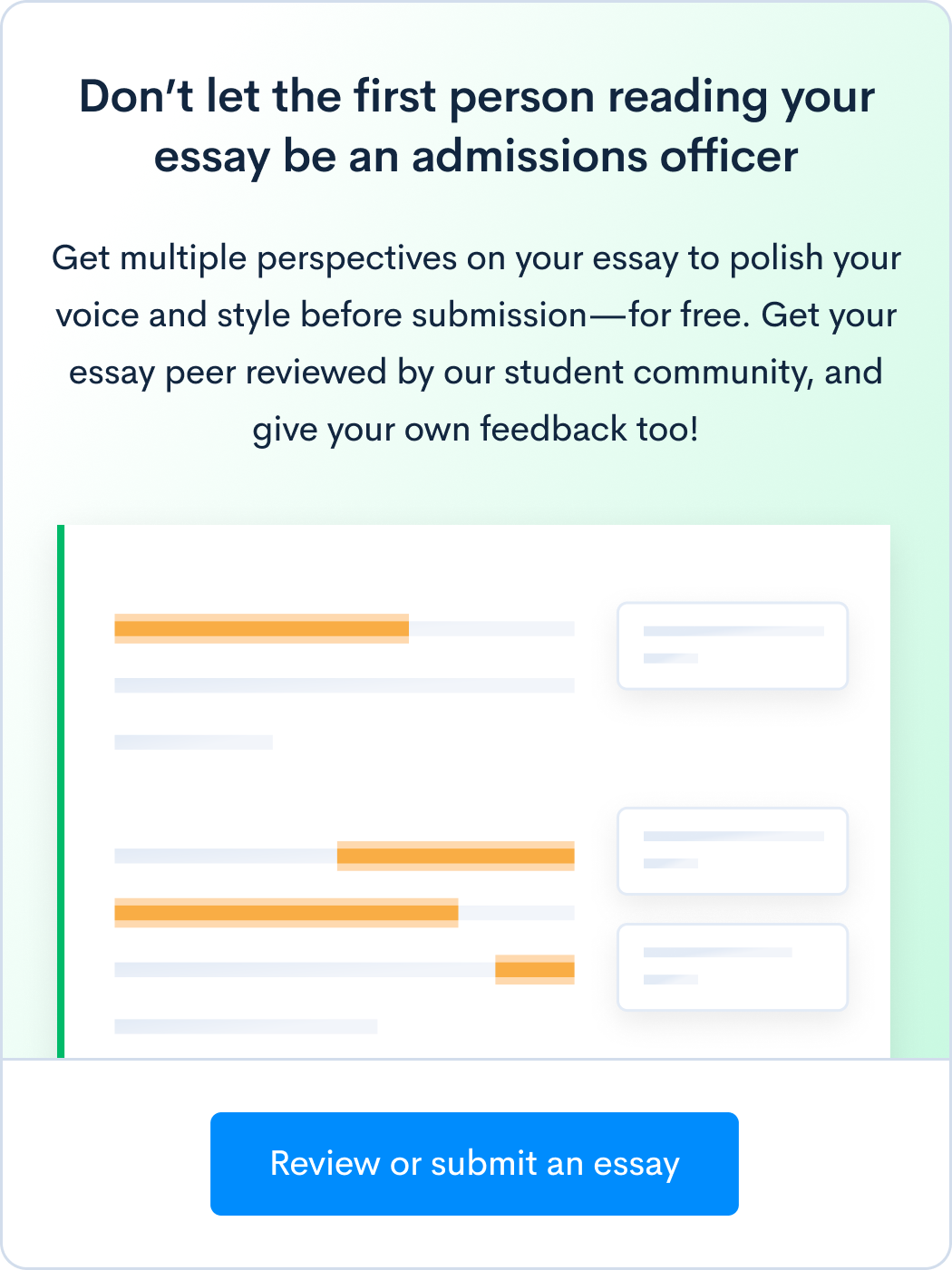
How has the world you come from—including your opportunities, experiences, and challenges—shaped your dreams and aspirations? (200 words)
Out of the many prompts, this one is the most open-ended. MIT is asking this question to see how your environment has shaped you as an individual. When thinking about your “world”, think about the unique culture, community, and people you have interacted with and consider how they each have contributed to the person you are today. Consider how they have shaped your value systems and the way you view the world.
A great way to start brainstorming for this prompt is to think about your dreams and aspirations first; what do you hope to achieve in your lifetime? Next, reflect on specific opportunities, experiences and challenges that you have faced in your community and evaluate how these factored into your individuality and personal goals.
Perhaps you grew up on a Native American preservation and were a central figure in the tribe’s pow-pow committee but faced backlash from park rangers for planning rituals in public areas, and this fueled your desire to work in politics to defend indigenous land-rights. Or maybe your childhood love for building Lego masterpieces contributed to your goal of becoming a civil engineer. Either way, remember to reflect on your past (or present) and use this reflection to analyze your future.
What each of these examples succeeds in doing is analyzing the “world” from the lens of challenges, experiences, and opportunities that led to a specific dream or aspiration.

MIT brings people with diverse backgrounds together to collaborate, from tackling the world’s biggest challenges to lending a helping hand. Describe one way you have collaborated with others to learn from them, with them, or contribute to your community together. (200 words)
For this prompt, MIT wants to see your selfless side by looking at the strategies you take to help those around you. Don’t panic if you haven’t saved hundreds of lives or discovered the cure for cancer; as the prompt suggests, helping your community can be as simple as lending a shoulder for your friend to cry on. Your community can be practically any group from family, neighbors, classmates, sports team, etc.
Whether big or small, think of a time that you made a positive impact on one or more people. Maybe you have experience volunteering at the Red Cross or at your local retirement home. Or maybe you founded a club at your school with the goal of bringing education to children in need. No matter what the cause is, show the admissions officers your generosity and willingness to make a difference in your community.
Here are a few more examples:
- Tutoring a Teammate – One of your cross country teammates said that she was struggling in her Algebra 2 class, and was worried about failing. She didn’t see the point of math and thought she was just “bad” at it. You volunteered to tutor her for free on a weekly basis. After just a month of your tutoring sessions, your teammate got her first A on a test. This sparked your interest in teaching math, as you were able to get your teammate to not only understand math concepts, but also appreciate them.
- Food Waste Campaign – You noticed your school cafeteria was generating tons of daily food waste, so you created a campaign to implement a compositing system and encourage students to reduce their waste. You gathered a team to research different composting services, contact your principal and the school board, and create educational materials on how to compost correctly. The program was successful at your school and diverted several tons of food from the landfill weekly. You’re currently working on getting the system implemented across the district.
What both of these examples succeed at doing is describing the impact that an action has on others. Whether it be putting a smile on someone’s face or preventing a child from contracting a deadly disease, remember to show the reader what the outcome of your efforts were. Tying in your personal development is another great way to heighten the magnitude of your contribution, as it gives your actions more significant personal meaning. Ask yourself: How did you grow from this experience? What changes did you see?
How did you manage a situation or challenge that you didn’t expect? What did you learn from it? (200 words)
The idea of this prompt is similar to the archetypal “ Overcoming a Challenge ” prompt. Whether it is a personal situation or a challenge, MIT wants to know how you handle difficult situations that suddenly arise and what you learn from such experiences.
You want to construct an anecdote that goes through both the situation and/or challenge and your thought process. When crafting your response, start by briefly describing the situation or challenge, making sure to answer the question, “ What was so significant about this event? ” Next, go into detail about the steps you took to approach the unexpected event and how you went about this process. Make sure to discuss the outcome of the situation and show the admissions officer how you matured from this experience, specifically identifying what you have learned from this experience. The most common mistake students make is to focus too much on the situation or challenge, rather than their thought process, emotions, and their growth.
As you brainstorm and begin drafting your response, here are some guided questions to get you thinking:
- Why was this challenge so important to you? What is the significance?
- At that moment, what was your reaction to the situation? How did it affect you (thoughts, emotions)?
- Were the steps you took to manage the situation successful? Why or why not?
- How did this challenge allow you to grow and mature as an individual?
Try to avoid “challenges” that are too trivial; although you may be upset that you got a B on that one calculus test, this is not a significant enough challenge to analyze. For this prompt, it’s important to demonstrate personal growth and maturity, as this shows your capacity to adapt to difficult environments.
You should also try to avoid challenges that are cliche , such as:
- A sports injury
- Working hard in a difficult class
- Adjusting to a new culture or school
- Facing tragedy (death, illness, abuse)
- Romantic relationships and breakups
These tend to be very common experiences that have a predictable outcome, often focus too much on the challenge instead of your growth, or are simply inappropriate topics for your essay. Of course, you can still choose to write on a common topic if you feel that you can write something especially meaningful, but it’s better to find a more original experience to share.
You can, however, “spin” a cliche topic. For example, the “sports injury” essay tends to go: you get injured, can’t play, have to go through rehab, and you eventually get back on the field and succeed. A more unique approach would be to talk about how your injury led you to start a blog while you were recovering, and that became a big passion. Or, how your injury made you realize that you actually liked the strategy of the sport more than the actual sport, which led to your interest in competitive chess.
Here are some good examples:
- You had to switch positions last-minute on your Model UN simulation of the Nuremberg Trials. You’d researched and prepared your arguments for months, but a delegate showed up late, so you needed to represent the opposite side you’d prepared for. Instead of panicking, you gather as much info as you can in a short time to argue the other perspective. When it’s your turn to speak, you blank out, however, and the Committee Director says they’ll come back to you. You take a deep breath, refocus, and re-outline your notes. When it’s time to speak again, you present a confident and articulate argument. The experience teaches you the importance of both preparation and adaptability.
- You are passionate about robotics and wanted to start a competitive robotics club at your school. You gathered a group of interested students and began the process of getting the club approved by the administration. To your disappointment, your club was rejected. Instead of accepting defeat, you and your peers petitioned the school in hopes of having the board members reconsider their decision. While you didn’t ultimately win over the school board, you discovered your talent for persuasive speaking in the process, and decided to join the Debate Team. You’ve since won several awards and even got to give a local TED Talk.
No application can meet the needs of every individual. If there is significant information that you were not able to include elsewhere in the application, you may include it here. (Many students will leave this section blank—and that’s okay.) (350 words)
This is your typical “ Additional Information ” prompt, and while we usually recommend that you fill out all optional prompts, this is an exception. As MIT says themselves, many students won’t need this space to complete their application.
However, if you have unusual circumstances or a significant experience you weren’t able to address, you should write about it here. Some potential topics include:
- Family responsibilities that prevented you from taking on traditional extracurriculars
- Financial hardships
- Death of a loved one
- Unique extracurricular that can’t be fully explained in the Activities section
While your other essays should have a more narrative quality, your response here can be more straightforward, and you also don’t need to take up the full 350 words.
Just avoid using this space for topics that may be deemed trivial, such as explaining that B on your transcript when you otherwise have straight A’s. Significant dips in grades for reasons out of your control are certainly fine to explain, but make sure that anything you cover here is actually a major part of your high school experience and development.
It’s important to note that in light of the Supreme Court striking down the use of affirmative action in college admissions, many colleges have added open-ended prompts that give students the opportunity to discuss their racial background. Because the ruling allows colleges to consider race on an individual basis, essays are the prime place for you to reveal your racial background and its effect on you. If you feel that your racial background has impacted you significantly, this is the place to discuss that.
Where to Get Your MIT Essays Edited
Do you want feedback on your MIT essays? After rereading your essays countless times, it can be difficult to evaluate your writing objectively. That’s why we created our free Peer Essay Review tool , where you can get a free review of your essay from another student. You can also improve your own writing skills by reviewing other students’ essays.
If you want a college admissions expert to review your essay, advisors on CollegeVine have helped students refine their writing and submit successful applications to top schools. Find the right advisor for you to improve your chances of getting into your dream school!
Related CollegeVine Blog Posts


MIT Sloan EMBA Application Deadlines and Essay Tips: 2023-2024

MIT Sloan School of Management has shared its Executive MBA application essays for the 2023-2024 application cycle. MIT Sloan has removed the Statement of Purpose and instead has three required essay questions and four straightforward short-answer questions. There is also one optional essay.
For those interested in the MIT EMBA Program, take a look at the latest class profile to assess whether the school may be a good fit for you. Keep in mind that MIT Sloan is looking for MBA applicants with considerable pre-MBA experience. In fact, the average EMBA student arrives at Sloan with 17 years of experience. While some EMBA programs will consider less-experienced professionals, MIT Sloan is not one of them. (Wondering if you have enough experience for MIT Sloan’s EMBA program? Reach out today .)
The 2024 class had two cohorts of about 63 students each. Those encompassed one-third women, about half international students, and about 17 percent underrepresented minorities.
Below, please find the upcoming application deadlines and our analysis of the MIT EMBA application essays.
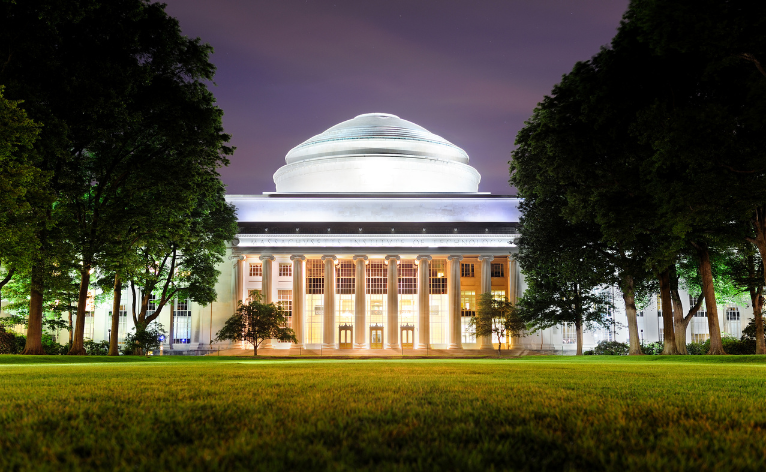
The 2023-2024 MIT EMBA Application Deadlines Are:
Early Round: December 7, 2023
Round 1: January 11, 2024
Round 2: February 8, 2024
Round 3: March 7, 2024
Round 4: April 4, 2024
Round 5: May 2, 2024

2023-2024 MIT EMBA Application Essays
Mit sloan emba essay 1: lasting impact can happen on large and small scales. tell us about how you inspired your team, and what you learned about yourself as a leader, through a recent difficult time. (200 words or less).
With 200 words at your disposal, we recommend choosing a recent difficult time that can be easily described and whose complexity is clearly stated. After describing the difficulty, explain quickly and concisely what you did that had impact in this situation: a decision you made or an action you took. Be specific and show the impact or effect it had on your team. Finally, devote the last few sentences to what you learned about yourself from this. Perhaps you rose to a challenge you had not expected, or you discovered leadership skills you did not know you had, or perhaps you learned that people rely on you more than you thought.
End by looking toward the future and how the power from that lesson will stick with you.
MIT Sloan EMBA Essay 2: MIT Sloan finds strength through diversity. We believe that a commitment to diversity, inclusion, equity, and well-being is a key component of both principled leadership and sound management practice. We seek to create a community that encompasses all dimensions of diversity and fosters excellence within MIT Sloan. This includes diversity of identity, thought, role, and perspective. Please describe a time when you contributed toward making a work environment or organization more welcoming, inclusive, and diverse. (200 words or less)
Once again, choose a situation that can be easily explained.
Quickly set the stage for your action: The company was facing a layoff, or colleagues who had been hired were not receiving the proper training, or the company was hiring only white male scientists.
Then explain what you did to make the situation or environment more inclusive or better, giving the necessary detail. Show any leadership you practiced and any opposition you may have faced. Finally, cite information/statistics to show how your action made the situation more inclusive or welcoming. If you can show systemic change, even better.
Before tackling this short question, you might want to read the prompt for essay 3 to make sure you allocate your stories to the right places and that they complement each other.

MIT Sloan EMBA Essay 3: Please tell us about a time when you introduced an idea that changed the way in which your organization approached a business challenge or opportunity. What factors did you consider, what barriers or obstacles did you face, and how did you measure success? (300 words or less)
Here, choose something meaty from your leadership and initiative pile that you can develop in detail. This does not have to be an initiative in your professional context: It could be extracurricular as well if it brought about lasting change in an organization.
Start by sharing the idea and any context readers need to know to appreciate its value. For example, a systemic problem in organizational structure or an opportunity that would be sadly missed because of poor communication between departments. Or a situation that made you think, “Why don’t we try XXX?”
Then, discuss how you developed your idea, the research and analysis you put into showing that it would work, any opposition or challenges you faced, and the creative initiative you engaged to put your idea forward and sell it. That is the bulk of the essay. Show your analytical and problem-solving prowess.
Finally, tell the admissions committee what came of your effort—how the nearly missed opportunity was turned around or how the business problem was solved. Show results through statistics, if possible. Dedicate the final words to any important lessons you may have learned.
The MIT Sloan EMBA application also includes four short-answer questions:
General Management Experience: Please describe your General Management experience. Cite a recent example that demonstrates your general managerial perspective. (100 words)
For this short answer you want to sum up your general management experience. Then choose one situation/anecdote that captures most specifically and fully the range of functions/people/challenges you have managed and demonstrates your managerial abilities. It could be a specific and challenging merger that required putting out a lot of fires, for example, or the decision to lay off people and merge departments. You want to be as specific as possible in showing the impact of your managerial prowess.
Principled Leadership: Describe a principle that motivates you in your life and career. How have you put this principle into practice? (100 words)
Choose a leadership principle that matters a great deal to you and briefly explain why it is a motivating value in your life/work. Next, share an example of how you applied it as a leader. If honesty is your principle, try to pick something that illustrates how applying that might have been particularly difficult: informing a client of something critical, or making a painful staffing decision.
Goals : What are your immediate and long-term professional objectives and what do you need to achieve them? (100 words or less)
With only 100 words, you should very briefly explain both your short-term and long-term professional goals (for more on how you think about your goals, check out this blog ). Then, tell the reader what skills you need to acquire to reach these goals. DO NOT include a laundry list of skills here; instead home in on a few key areas.
Why Now?: Why is this the right time to pursue the MIT Executive MBA? (100 words or less)
There is no one answer as to why NOW is the right time for an MBA so be honest here. Perhaps you have reached a plateau at work and need the MBA to help you reach the next level. Perhaps you are looking to make a career pivot and the MBA will help you. For example, we have worked with health care professionals looking to expand the scope of their role outside of clinical practice. Or maybe you are an entrepreneur looking to close key skill gaps to be successful in your next venture. Regardless of the reason, make it clear to the reader how an MIT EMBA, NOW, is crucial to your success.
The MIT Sloan EMBA application also includes an optional question:
Here you may provide any additional information you would like the Admissions Committee to know that may be helpful in evaluating your candidacy. For example:
How has the world you come from shaped who you are today for example, your family, culture, community, all help to shape aspects of your life experiences and perspective. use this opportunity if you would like to share more about your background., would additional context help the committee to understand the significance of an honor or award from your resume, what would you like to tell us about your hobbies or non-profit work, is there anything else you want to share.
For guidance on whether you should write an optional essay, check out Personal MBA Coach’s blog here .
Need help with your MIT Sloan EMBA Application?
Find out more about how we can help you achieve MBA application success with our EMBA Comprehensive Packages .

You also may like these other blog articles:

Find out why we are consistently ranked #1. Sign up for a 30-minute consultation today!
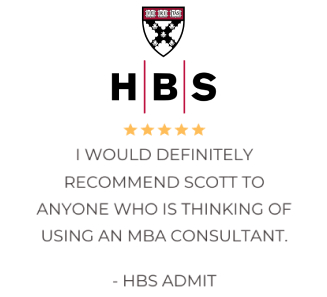
We have over 200 5 Star Reviews. Find out WHY!
schedule consultation
Suggestions or feedback?
MIT News | Massachusetts Institute of Technology
- Machine learning
- Social justice
- Black holes
- Classes and programs
Departments
- Aeronautics and Astronautics
- Brain and Cognitive Sciences
- Architecture
- Political Science
- Mechanical Engineering
Centers, Labs, & Programs
- Abdul Latif Jameel Poverty Action Lab (J-PAL)
- Picower Institute for Learning and Memory
- Lincoln Laboratory
- School of Architecture + Planning
- School of Engineering
- School of Humanities, Arts, and Social Sciences
- Sloan School of Management
- School of Science
- MIT Schwarzman College of Computing
MIT launches Working Group on Generative AI and the Work of the Future
Press contact :.
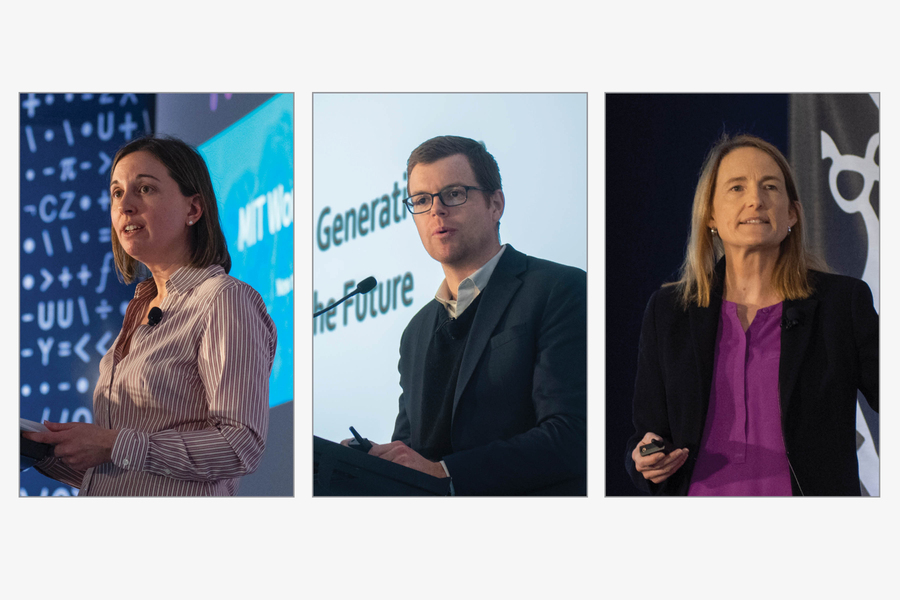
Previous image Next image
From students crafting essays and engineers writing code to call center operators responding to customers, generative artificial intelligence tools have prompted a wave of experimentation over the past year. At MIT, these experiments have raised questions — some new, some ages old — about how these tools can change the way we live and work.
Can these tools make us better at our jobs, or might they make certain skills obsolete? How can we use these tools for good and minimize potential harm?
The generative AI wave has elicited excitement, anxiety, and plenty of speculation about what's to come, but no clear answers to these core questions. To discover how generative AI can lead to better jobs, MIT is convening a working group on Generative AI and the Work of the Future . The working group is kicking off with 25 companies and nonprofits alongside MIT faculty and students. The group is gathering original data on how teams are using generative AI tools — and the impact these tools are having on workers.
“The world counts on MIT to turn sophisticated ideas into positive impact for the good of society,” says MIT President Sally Kornbluth. “This working group is focused on doing exactly that: In the face of broad public concern about AI’s potential to eliminate jobs, they are developing practical strategies for how to use generative AI to make existing jobs better and improve people’s lives.”
Organized at MIT’s Industrial Performance Center (IPC) and led by IPC Executive Director Ben Armstrong and MIT professors Julie Shah and Kate Kellogg, the working group recently released the first edition of its monthly newsletter, Generation AI , to share its early findings — and convened its first meeting of AI leads from a diverse cross-section of global companies. The working group also hosted a workshop on Feb. 29 highlighting responsible AI practices, in partnership with MIT’s Industrial Liaison Program.
The MIT team driving this initiative is a multidisciplinary and multi-talented group including Senior Fellow Carey Goldberg and Work of the Future graduate fellows Sabiyyah Ali, Shakked Noy, Prerna Ravi, Azfar Sulaiman, Leandra Tejedor, Felix Wang, and Whitney Zhang.
Google.org is funding the working group’s research through its Community Grants Fund, in connection with its Digital Futures Project , an initiative that aims to bring together a range of voices to promote efforts to understand and address the opportunities and challenges of AI.
“AI has the potential to expand prosperity and transform economies, and it is essential that we work across sectors to fully realize AI’s opportunities and address its challenges,” says Brigitte Hoyer Gosselink, director of Google.org. “Independent research like this is an important part of better understanding how AI is changing the way people and teams do their work, and it will serve as a resource for all us — governments, civil society, and companies — as we adapt to new ways of working.”
Over the next two years, the working group will engage in three activities. First, it will conduct research on early use cases of generative AI at leading companies around the world. The group’s goal is to understand how these new technologies are being used in practice, how organizations are ensuring that the tools are being used responsibly, and how the workforce is adapting. The group is particularly interested in how these technologies are changing the skills and training required to thrive at work. MIT graduate student Work of the Future Fellows are collaborating with companies in the working group to conduct this research, which will be published as a series of case studies beginning in 2024.
Liberty Mutual Insurance joined the working group as part of its long-standing collaborative relationship with MIT researchers. “In a year of extraordinary advancements in AI, there is no doubt that it will continue shaping the future — and the future of work — at a rapid pace,” says Liberty Mutual CIO Adam L’Italien. “We are excited to collaborate with MIT and the working group to harness it to empower our employees, build new capabilities, and do more for our customers.”
Second, the working group will serve as a convener, hosting virtual quarterly meetings for working group members to share progress and challenges with their uses of generative AI tools, as well as to learn from their peers. MIT will also host a series of in-person summits for working group members and the public to share research results and highlight best practices from member companies.
Third, based on the group’s research and feedback from participating organizations, the working group will develop training resources for organizations working to prepare or retrain workers as they integrate generative AI tools into their teams.
IBM has joined the working group as part of its broader investments in retraining and job transformation related to generative AI. “Skills are the currency of today and tomorrow. It is crucial that employees and employers are equally invested in continuous learning and maintaining a growth mindset,” says Nickle Lamoreaux, senior vice president and chief human resources officer at IBM.
The working group has already interviewed or engaged with more than 40 companies. Working group members include Amsted Automotive, Cushman and Wakefield, Cytiva, Emeritus, Fujitsu, GlobalFoundries, Google Inc., IBM, Liberty Mutual, Mass General Brigham, MFS, Michelin, PwC, Randstad, Raytheon, and Xerox Corp.
To learn more about this project or get involved, visit ipc.mit.edu/gen-ai .
Share this news article on:
Related links.
- Generative AI and the Work of the Future
- MIT Industrial Performance Center
Related Topics
- Artificial intelligence
- Labor and jobs
- Technology and policy
- Technology and society
- Digital technology
- Collaboration
- Industrial Performance Center
Related Articles

Explained: Generative AI

MIT scholars awarded seed grants to probe the social implications of generative AI

3 Questions: How automation and good jobs can co-exist

3 Questions: Thomas Kochan on new policies to shape work of the future
Previous item Next item
More MIT News
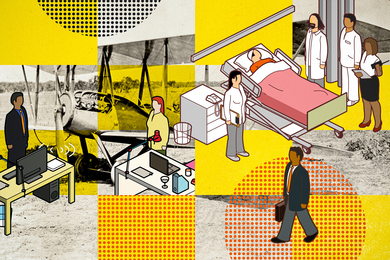
Most work is new work, long-term study of U.S. census data shows
Read full story →

Does technology help or hurt employment?

A first-ever complete map for elastic strain engineering

“Life is short, so aim high”

Shining a light on oil fields to make them more sustainable

Atmospheric observations in China show rise in emissions of a potent greenhouse gas
- More news on MIT News homepage →
Massachusetts Institute of Technology 77 Massachusetts Avenue, Cambridge, MA, USA
- Map (opens in new window)
- Events (opens in new window)
- People (opens in new window)
- Careers (opens in new window)
- Accessibility
- Social Media Hub
- MIT on Facebook
- MIT on YouTube
- MIT on Instagram
More From Forbes
4 college admissions trends shaping top schools’ decisions in 2024.
- Share to Facebook
- Share to Twitter
- Share to Linkedin
Locust Walk with students in fall, University of Pennsylvania, University City area, Philadelphia, ... [+] PA, USA
Ivy Day 2024, the day when top schools' admissions decisions are released, is a pivotal moment to explore the evolving landscape of college admissions and anticipate future directions. This year’s transformations are reshaping college application strategies in profound ways. Let's dive into the latest developments.
Return To Standardized Testing
The return to SAT and ACT requirements by institutions such as Dartmouth, Brown and MIT is a sign that many highly selective institutions may go back to requiring standardized tests. In a slight modification to the testing requirement, Yale’s test-flexible policy allows students to submit Advanced Placement and International Baccalaureate scores in lieu of the standard SAT or ACT. This shift may be in response to a decline in college readiness benchmarks ; for instance, ACT exam scores are at their lowest in 30 years, even as GPAs in core subjects rise. This gap highlights a discrepancy between students' perceived readiness and their actual preparedness.
Although I foresee more colleges reinstating standardized testing requirements, I also expect the continuation of test-optional and test-blind policies. These policies serve not only to broaden application pools from underrepresented and disadvantaged groups but also as a strategy for financially challenged institutions to attract more applicants.
In other testing news, the College Board launched the first digital SAT earlier this month , introducing a significant shift from its traditional format. This new version is adaptive and adjusts the difficulty level of questions based on the student's responses, a departure from the fixed difficulty level of previous exams. Notably, students report that the math section was more challenging than anticipated, diverging from their experiences with practice exams. Unlike the SAT, which has transitioned to a fully digital format, the ACT continues to offer both digital and traditional paper-and-pencil options.
It's advisable for students to undertake diagnostic practice exams for both the SAT and ACT to ascertain which exam aligns better with their abilities. Should the practice scores be comparable, I recommend leaning toward the ACT. This preference stems from its stability in format over the years and the choice it offers between digital and paper-based exams.
Best High-Yield Savings Accounts Of 2024
Best 5% interest savings accounts of 2024.
Given the evolving landscape of testing policies, including recent SAT modifications, students should embrace a two-pronged approach: rigorously prepare for standardized tests while remaining flexible to the possibility of not submitting scores where test-optional policies prevail.
Rethink The Importance Of The College Essay
Duke University has made significant changes to its admissions process by no longer assigning numerical ratings to applicants' standardized test scores and essays . This adjustment took effect in the current application cycle. Previously, Duke assigned values from one to five for essays and test scores, contributing to a holistic score on a 30-point scale. Now, the point system is applied only to curriculum strength, academics, recommendations, and extracurricular activities.
The move to eliminate numerical scores for essays arises from concerns about the rise in AI-generated submissions and the possibility of essays being ghostwritten. Christoph Guttentag, the dean of undergraduate admissions, noted that although essays play a pivotal role in comprehending an applicant's profile, their reliability as indicators of a student’s actual writing skills has diminished.
This adjustment is not a response to the Supreme Court's ruling against considering race in admissions decisions. Nonetheless, essays have frequently been a focal point in discussions about fostering diversity through admissions. It is expected that other institutions may similarly de-emphasize essays, thereby elevating the significance of academic transcripts, the depth of extracurricular activities, and the relevance and demand for the selected major .
Apply Early
The number of early applications (a combination of early decision and early action) has jumped by 1 million, a 60% increase, over the last five years according to Common Application data in a New York Magazine report . In contrast, applications filed during the regular decision period increased by 26% over the same timeframe. This suggests a growing trend among high school seniors to leverage early application options as part of their strategy for college admissions, reflecting the competitive nature of securing admission to top institutions.
Navigate The FAFSA Challenges
The recent overhaul of the Free Application for Federal Student Aid has led to significant delays, affecting students who rely on financial aid to make college decisions. This FAFSA situation has left many students in limbo, uncertain about their financial aid packages and, consequently, their college choices. Some colleges and universities are extending decision deadlines to accommodate the delays, but the fear remains that this could deter a significant number of students from matriculating.
Alongside the FAFSA, it is imperative for families to engage early with platforms such as the College Board’s CSS Profile. They can help unlock a broad spectrum of financial support options, from federal aid to merit-based scholarships offered by institutions. For example, utilizing tools like the Federal Student Aid Estimator and individual college’s net price calculators can provide early insights into eligibility for federal financial assistance, guiding strategic financial planning for college.
Master Your College Admissions Strategy
As the 2024 college admissions landscape poses its share of complexities, students and families are encouraged to embrace a multifaceted approach tailored to the evolving standards of higher education. From adapting to the reemergence of standardized testing requirements at esteemed institutions like Dartmouth, Brown, and MIT, to addressing the challenges posed by the digitalization of the SAT and the nuanced evaluation of college essays at Duke, it's clear that flexibility and strategic planning are paramount. Furthermore, the rise in early application submissions highlights the importance of proactivity and informed decision-making in securing a favorable college admission outcome. By fostering a thorough understanding of these trends and deploying an informed application strategy, students can enhance their prospects of achieving their academic and career aspirations in this dynamic admissions environment.

- Editorial Standards
- Reprints & Permissions
- E-mail & Password
- Notification Settings
- Global Settings
- Applicant profile
- Update status
- My GMAT info
- --> My Education -->